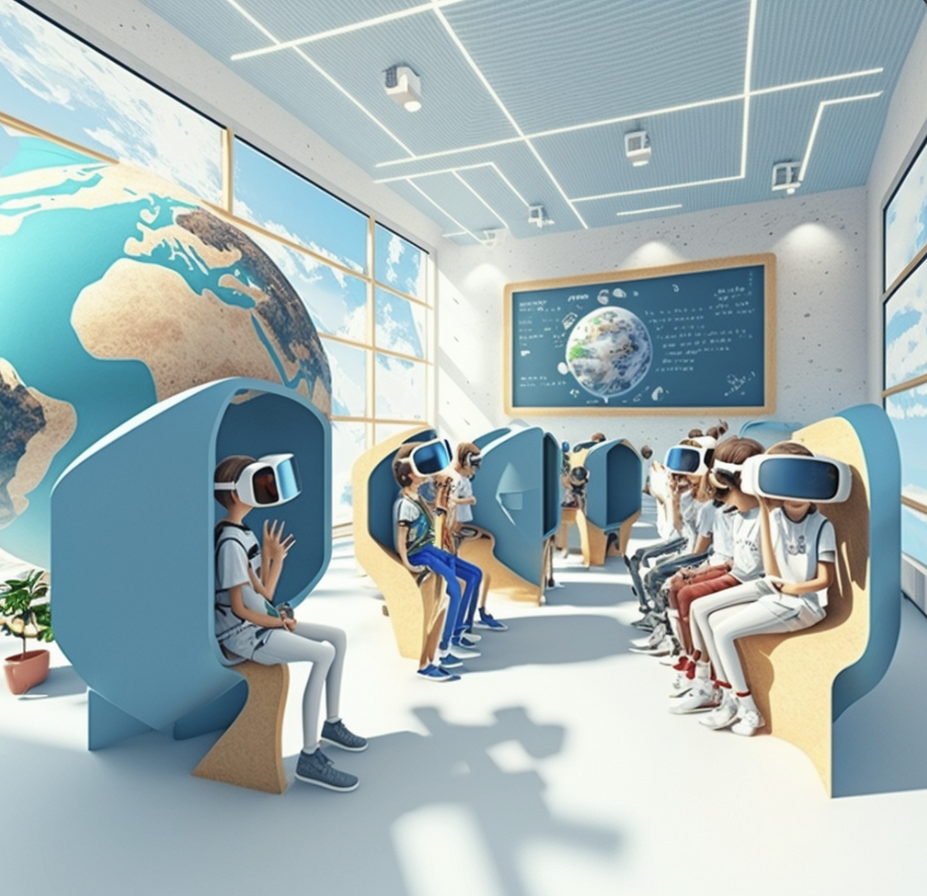As a small business owner, I am always on the lookout for ways to improve and innovate. That’s why I was excited to discover the potential of virtual reality (VR) as a platform for education.
At SunGlitch, we have developed technology that allows us to convert traditional 2D courses into immersive, interactive 3D experiences in VR. But we didn’t stop there. We also added a gamification component to make learning more engaging and fun.
 Source: Sunglitch
Source: SunglitchBut the real game-changer for us was incorporating voice-recognition technology. This added a layer of realism to the VR experience, making it feel like the student was actually present in the virtual classroom.
To ensure that students are fully engaged and not just going through the motions, we also use eye tracking technology to monitor their progress and make sure they are actively reading the material.
We believe that VR has the power to revolutionize the way we think about education. It provides a more engaging and interactive learning experience, which can lead to better retention of information and more successful outcomes for students.
Why Choose VR for Education?
Virtual reality (VR) has the potential to revolutionize the way we think about education. Here are a few key benefits of learning in VR:
-Immersive and interactive: VR allows students to fully immerse themselves in a subject and interact with it in a way that is not possible with traditional 2D learning methods.
-Engaging and fun: Gamification elements can make learning more enjoyable and engaging, leading to better retention of information.
-Realistic: Voice-recognition technology adds a layer of realism to the VR experience, making it feel like the student is actually present in the virtual classroom.
-Customizable: VR can be tailored to each individual student’s needs and learning style, making it a highly effective learning tool.
-Convenient: VR allows students to learn at their own pace and on their own schedule, making it an ideal option for busy professionals or anyone with a busy lifestyle.
 Source: Sunglitch
Source: SunglitchCommon Concerns About VR Education
While VR has many benefits, there are also some common concerns that people have about using it for education. Here are a few common concerns and how we address them at SunGlitch:
- Concern: VR can be expensive.
Solution: While VR hardware can be expensive upfront, the long-term cost savings of using VR for education can be significant. VR allows for personalized and self-paced learning, which can lead to better outcomes and a more efficient use of time and resources.
- Concern: VR can be isolating.
Solution: While it is true that VR can be used for solo learning, it can also be used for collaborative learning. At SunGlitch, we use VR to bring students together in virtual classrooms where they can work together and interact with one another.
- Concern: VR may not be as effective as in-person learning.
Solution: VR has been shown to be just as effective as in-person learning in many cases, and in some cases, it can even be more effective. A study by the University of Maryland found that students who learned using VR scored significantly higher on a test than those who learned using traditional methods.
Market Statistics
The VR education market is expected to grow significantly in the coming years. According to a report by MarketsandMarkets, the VR education market is expected to reach $17.8 billion by 2023, growing at a compound annual growth rate of 37.5% from 2018 to 2023. This rapid growth is a testament to the increasing demand for VR as a learning tool.
In conclusion, virtual reality (VR) has the potential to transform education as we know it. By offering immersive, interactive experiences that are tailored to each individual student’s needs, VR can make learning more engaging and effective. It allows students to learn at their own pace and on their own schedule, making it a convenient and flexible option for busy professionals or anyone with a busy lifestyle. The VR education market is expected to continue growing in the coming years, and we at SunGlitch are excited to be at the forefront of this exciting new technology. The future of education is here, and it’s only a matter of time before VR becomes the norm.
Author Bio
Heather Sandfort is the CEO and the founder of SunGlitch. She has a bachelor’s degree in Emergency Medicine from the University of Pittsburgh. She has a second bachelors of Science in Nursing from Drexel University. She is currently enrolled in a Nurse Practitioner program at Jefferson University. She also has worked in EMS for over 12 years. 7 years as a paramedic. She worked as an Emergency room nurse for four years. She has experience teaching CPR, ACLS, PALS, and EMT school. She is passionate about emergency medicine and excited to bring all of her schooling and experience to a VR platform.
